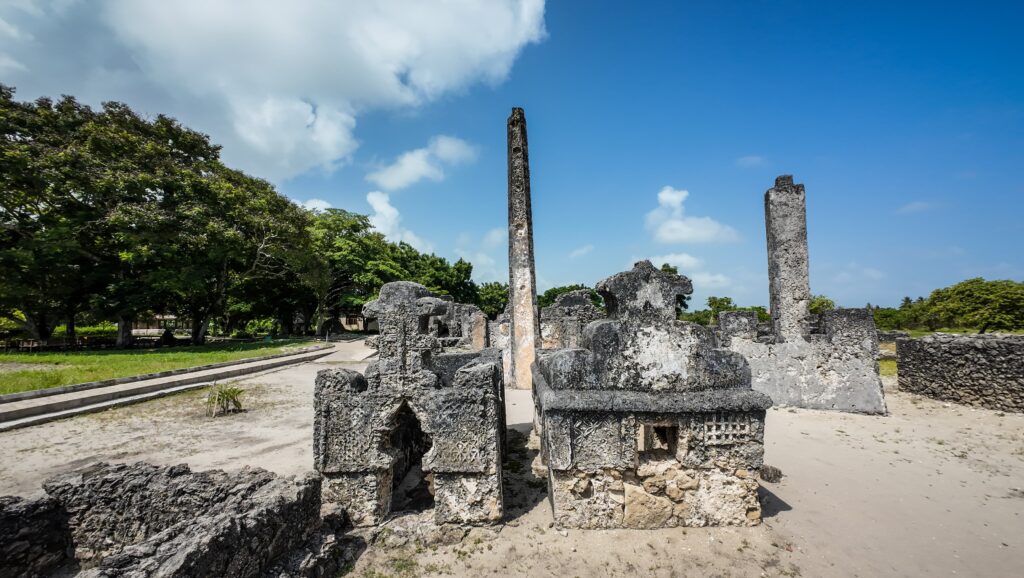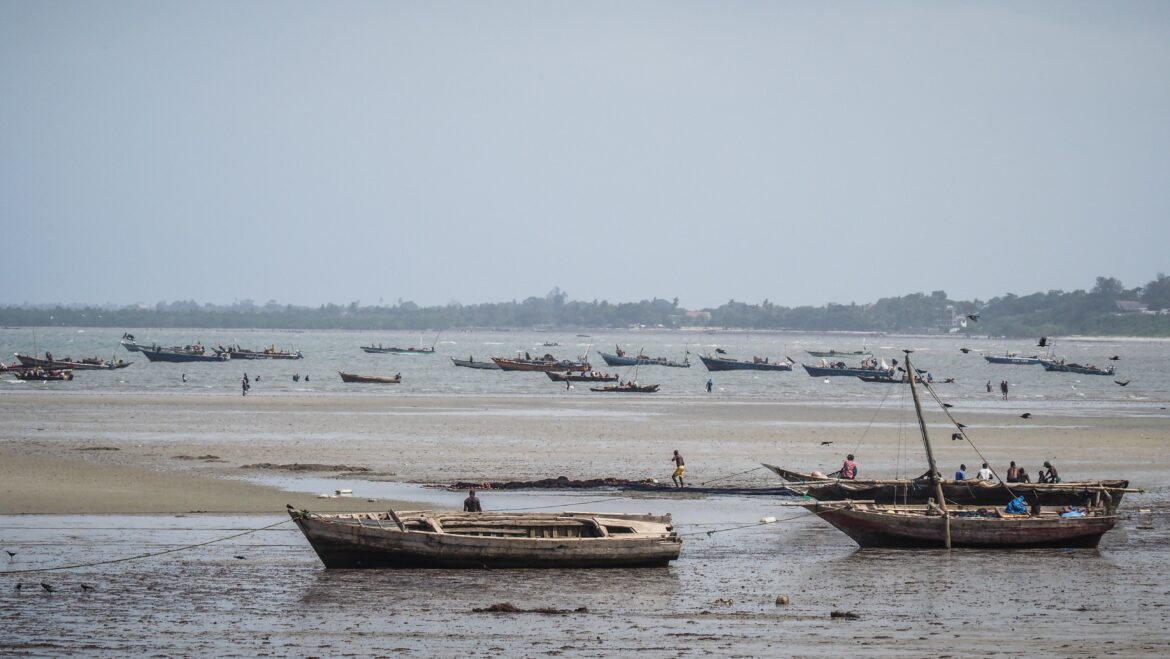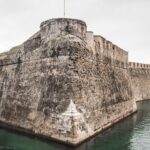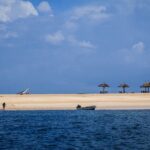Bagamoyo, a coastal town in Tanzania, has a rich and multifaceted history shaped by its role as a trade centre, a hub for spreading religion, and a site of colonial influence.
It is recognized as a UNESCO World Heritage Site for its historical significance. It remains a cultural and tourist attraction, with key sites such as The Old Fort, Kaole Ruins, The German Boma and Livingstone Tower.
History
The name “Bagamoyo” is derived from the Swahili phrase Bwaga-Moyo, meaning “Lay down your heart.” This reflects the despair of captives brought there during the height of the East African slave trade.
Before its prominence as a trade centre, Bagamoyo was a small fishing and farming village inhabited by the Wakwere and Zaramo people.
In the 18th and 19th centuries, Bagamoyo became a major port for the Indian Ocean slave trade. Enslaved Africans from the interior were transported to the coast and sold to traders who shipped them to Zanzibar, the Middle East, and beyond.
Alongside slaves, ivory was another significant commodity traded through Bagamoyo.
In the 1860s, Bagamoyo became a hub for Christian missionary activities. The Catholic Holy Ghost Fathers established a mission station in 1868. This mission aimed to convert freed slaves and offer them refuge.
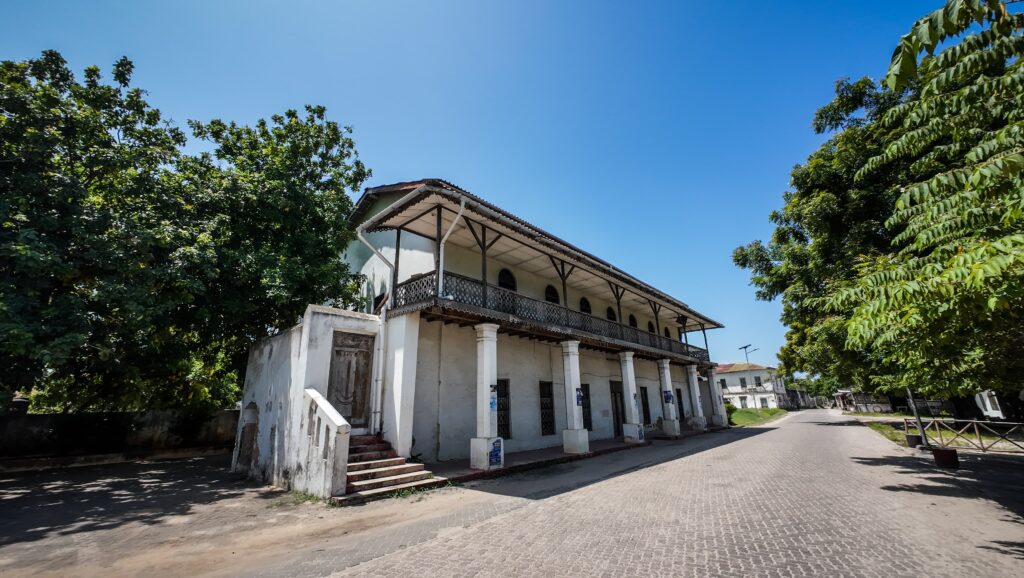
The mission is still operational and remains a key historical site, including the first church in East Africa.
Bagamoyo was a launching point for several famous European explorers of Africa, such as Richard Francis Burton, John Hanning Speke, and David Livingstone. The town was also a key stop for caravans travelling between the interior and the coast.
The town became part of German East Africa in the late 19th century. It briefly served as the capital before the administrative centre moved to Dar es Salaam in 1891. The Germans built several administrative and military structures in Bagamoyo, remnants of which are still visible today.
After the decline of the slave trade and the shift of administrative focus to Dar es Salaam, Bagamoyo lost much of its economic and political significance. However, its historical importance has been preserved through its architecture and cultural sites.
How to get there?
Bagamoyo is located about 65 kilometres (40 miles) north of Dar es Salaam, and you can get there via the following options:
By Public Transport
Daladalas are shared minibuses that operate between Dar es Salaam and Bagamoyo. Head to the Makumbusho Bus Terminal and get a transport to Bunju. There, you will need to change to another bus going to Bagamoyo.
The option is slow and uncomfortable, especially if you have luggage.
By Private Transfer / Taxi
Taxis can be booked using ride-hailing applications such as Bold or Uber. Alternatively, you can arrange a private transfer through your hotel or a local tour operator.
By Rental Car
You can rent a car at the airport or in Dar es Salaam. The drive to Bagamoyo takes 1-1.5 hours via the Bagamoyo Road (A14). The road is in good condition for most of the route.
By Organized Tour
Many tour companies in Dar es Salaam offer day trips or multi-day packages to Bagamoyo, often including guided visits to historical sites.
How to get around Bagamoyo?
Once in Bagamoyo, you can explore the town on foot, by bicycle, or using local transport like motorbike taxis (boda-bodas).
The best time to visit
The most favourable weather in Bagamoyo is during the dry seasons, as temperatures are comfortable and rainfall is minimal.
Dry Season (June to October)
Cool and dry with average temperatures around 25–30°C. Perfect for exploring historical sites, beaches, and cultural attractions without the hassle of rain.
Clear skies and calm seas for beach activities. Ideal for outdoor exploration and photography.
Short Dry Season (January to February)
Warm and relatively dry after the short rains (November–December). Great for a quieter experience and less crowded beaches.
Bagamoyo experiences two rainy seasons:
Long Rains (March to May)
Heavy rains can cause flooding and make travel more challenging. Roads may become muddy or difficult to navigate, especially for daladala users. Historical sites and beaches are less enjoyable due to wet conditions.
Short Rains (November to December)
These rains are lighter but can still disrupt outdoor plans.
Where to stay?
I stayed at IDC Guest House and it was an excellent choice. The room was cosy and breakfast included in the price was tasty. The only negative side was the weak internet inside the room.
What to see in Bagamoyo?
Stone Town
Old Arab Fort
It was most likely constructed by Abdallah Selemani Marhabi and is the oldest stone structure in Bagamoyo. In 1856, Sultan Majid (Zanzibar) converted the formerly private structure into a fort. The fort was acquired by the trader Sewa Haji in 1890, and in 1894, he turned it over to the Germans. After that, it was extended and served as a garrison.
The English used it as a prison following World War I and as a police station following independence.

Hanging Place
In December 1889 the Germans hung six Arabs who had backed the Bushiri rebellion against German colonial rule. On December 15, 1889, the Germans executed Leader Bushiri in Pangani.
In honour of all the resistance fighters killed during the German colonial era, the well-known “Hanging Tree,” which stands between the Old Fort and the seashore, is now a national monument.
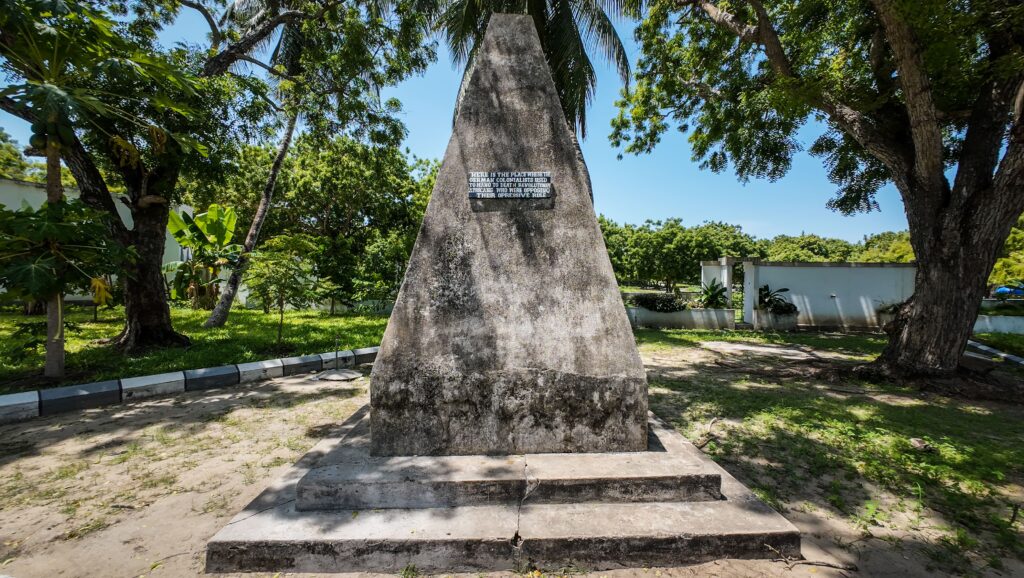
The German Cemetery
Between the port and the Bagamoyo College of Arts, right on the shore, is the former German colonial cemetery.
There are twenty burials here, including the graves of Gretel Schuller, who passed away six days after her birth, Antonie Bäumler, a German nurse who died on September 24, 1889, and eighteen German soldiers.
The cemetery was used between 1889 and 1894. The British District Commissioner Hon. William Bamphile, who died in 1939, rests in a separate grave outside the German graves.
Old German Boma
Following independence, the Bagamoyo District’s administration spent several years in the Boma before being forced to vacate the structure because of its deteriorating condition.
The front facade and balcony of the building fell due to the El Nino rains in 1998.
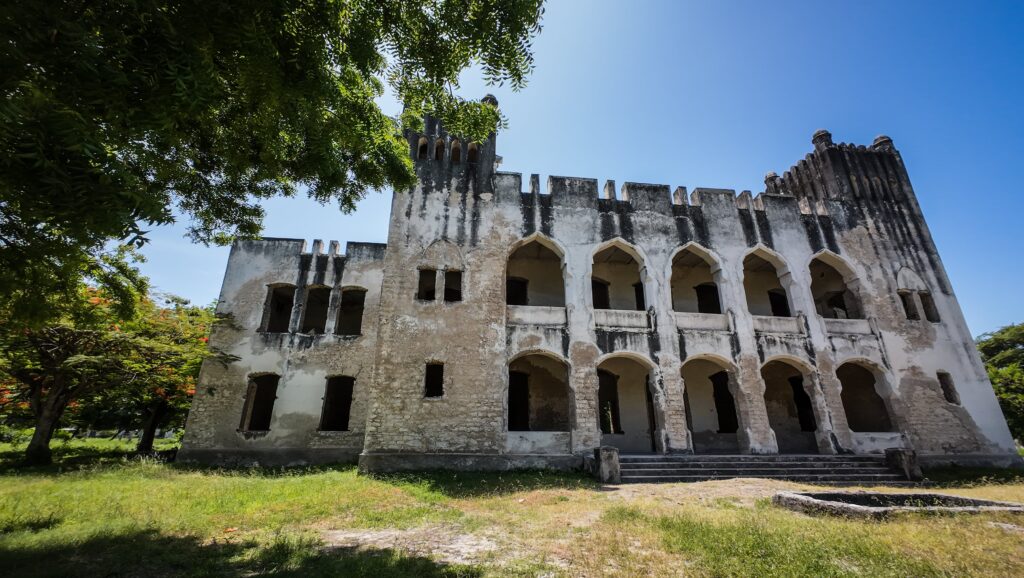
Old Bagamoyo Customs House
A new customs office with two towers at either end of the structure was constructed right at the Dhau Harbor in 1894–1895. It is the location where slaves were compelled to board boats and sent to Zanzibar’s infamous slave market.
Bagamoyo Old Market And Arts Market
When the Germans built the Old Slave Market in 1897, it housed market stalls, three shops, and a restaurant. The activity of the market declined as the city’s importance as a caravan trading post declined. The government of Tanzania gave the market to the artists to use as the Bagamoyo Art Market.
Catholic Historic Museum and Mission Cross
The Holy Ghost Fathers founded the pioneer mission after they were donated the land needed for it in 1868 by Sultan Majid. The modern Holy Ghost Church was constructed between 1910 and 1914, although the previous, which was constructed in 1872, is said to be the oldest church on the East African mainland. In 1874, David Livingstone was interred for a night at the Holy Ghost Mission and the Livingstone Tower, a component of the original chapel, is named in his honour.
The museum includes information about the slave trade, missionaries, the life of the people and some collections of artefacts of the indigenous tribes.
Entrance fee: 20.000 TZS for foreigners.
On the beach, directly across from the Catholic mission, is the imposing Mission Cross which was built in 1993 to honour the first missionaries to arrive in East Africa in 1868 and the Christianization of Africa.
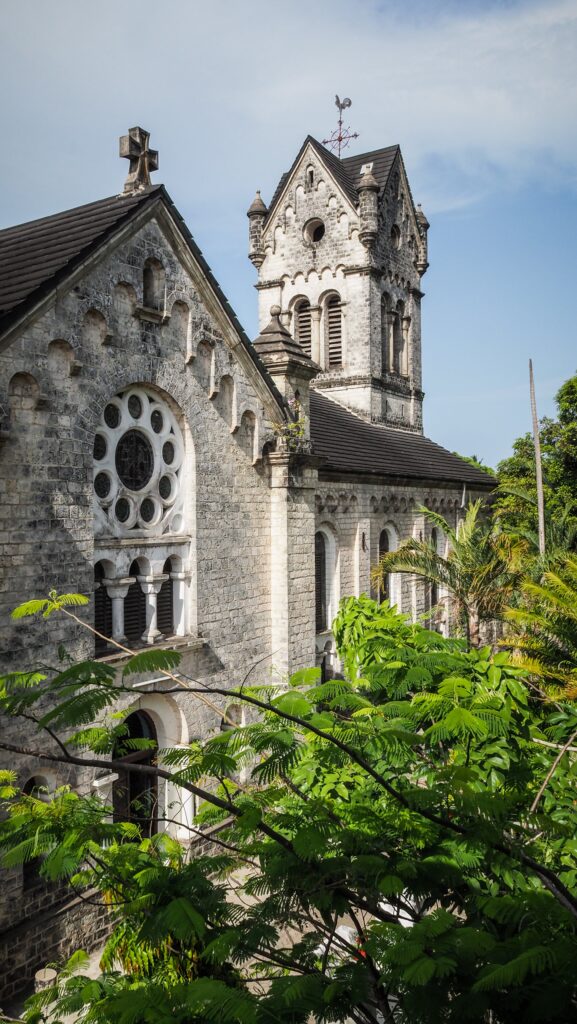
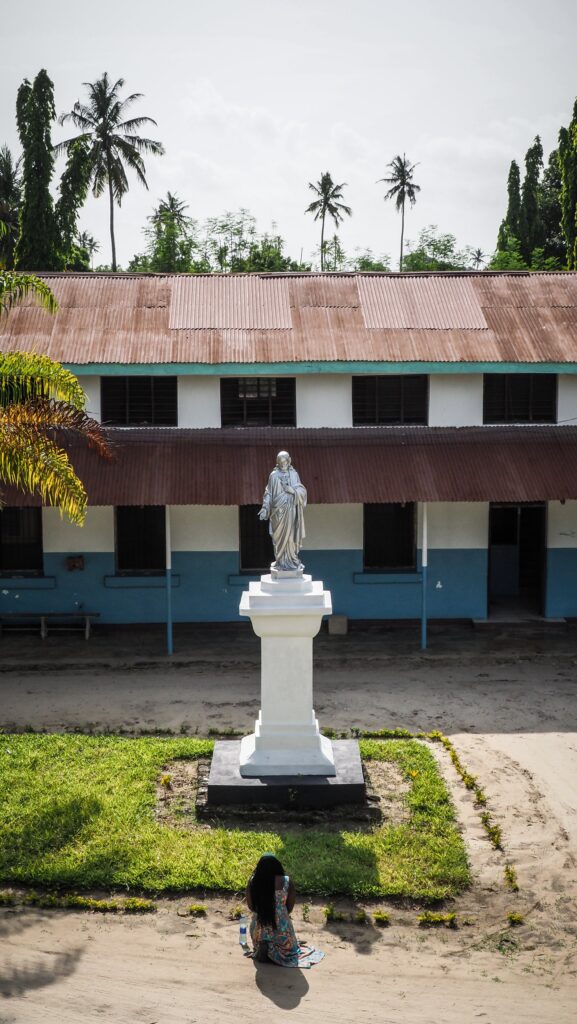
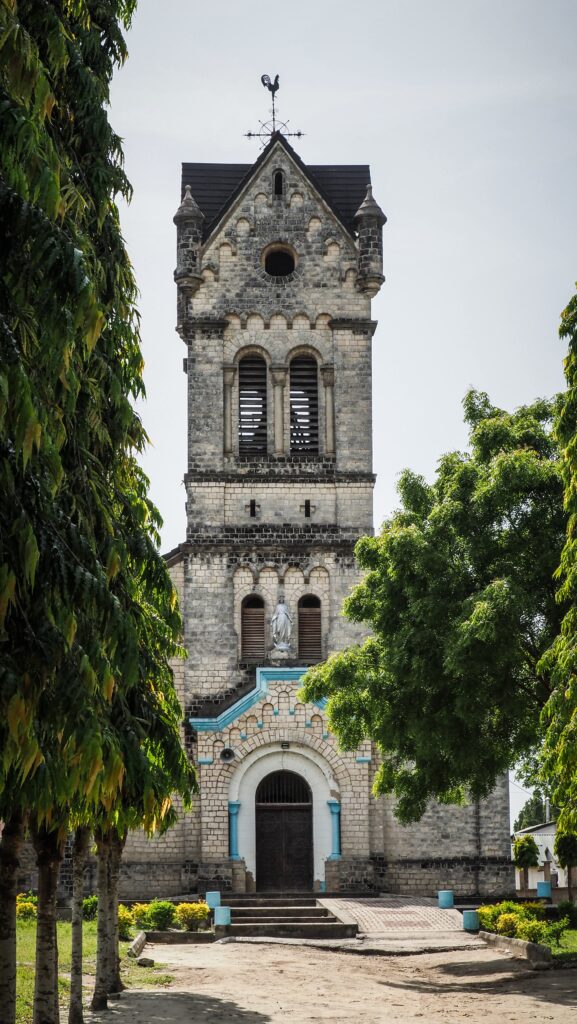
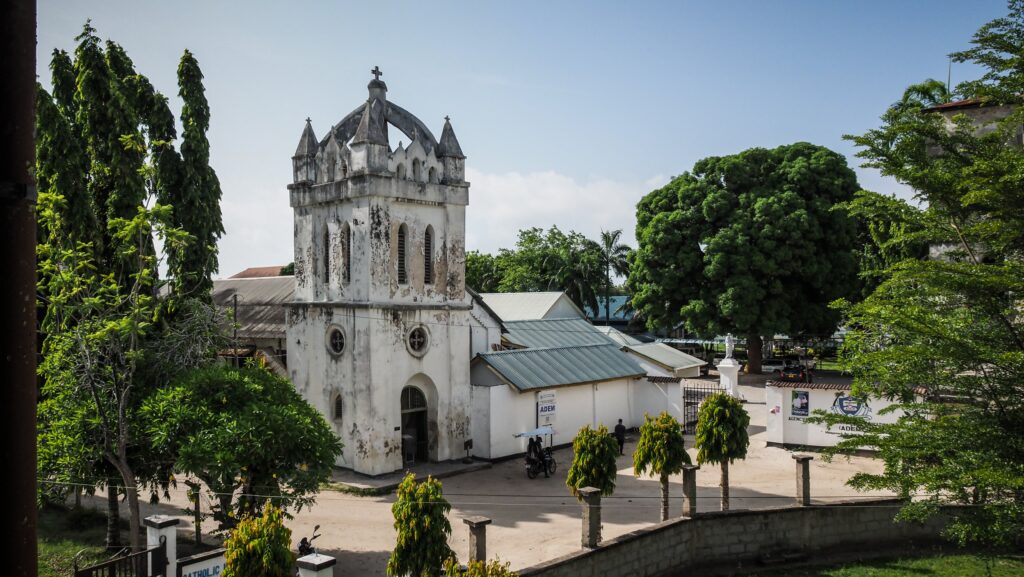
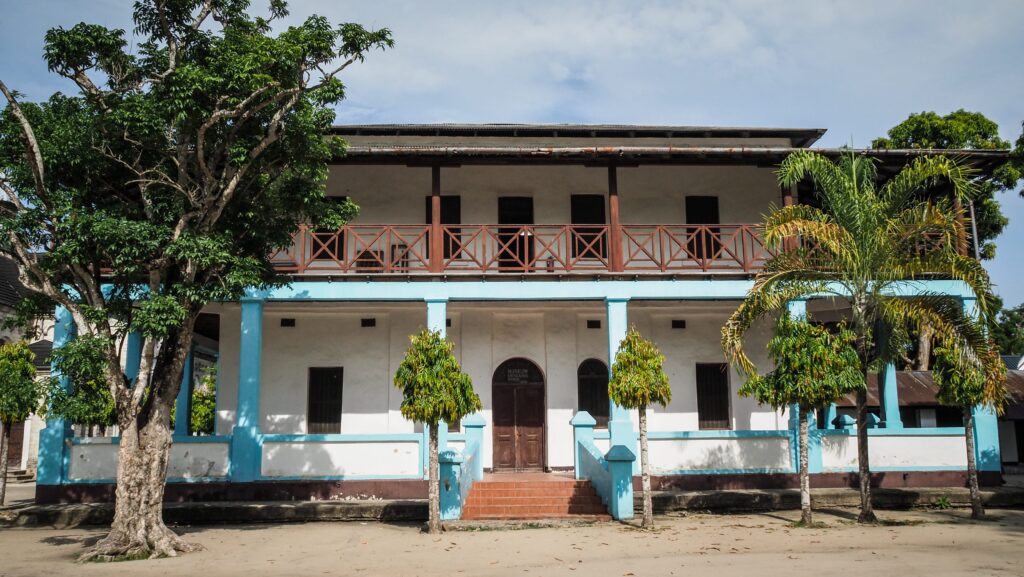
Bagamoyo Beach
Wonderful and lively place to walk around and to swim. There are many boats, snacks sellers and plenty of locals hanging out in the afternoon.
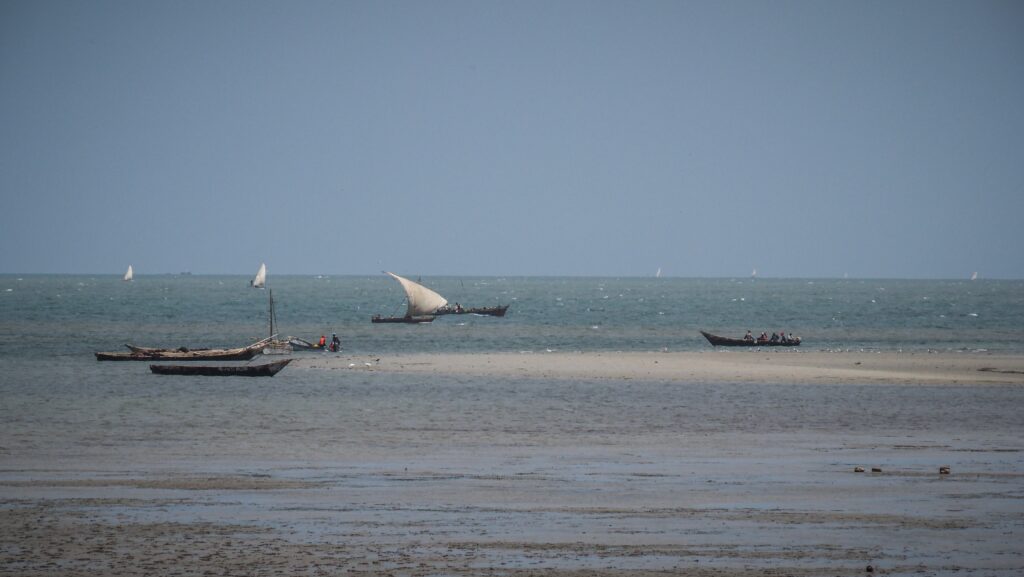
The Caravan Serai Slave Trade Museum
One of the sites of remembrance connected to the ivory and slave trade operations of the 19th century, which features Swahili-Islamic architecture. Mr Said Magram Awadh, an Arab trader with a coconut plantation in Bagamoyo, constructed the two-story structure in the 1860s.
Coins, various ceramics, beads, and other anthropological artefacts related to the slave and ivory trade during the 19th century are on show in the museum.
It’s a small place which is quite expensive for foreigners: entrance is 23.000 TZS + tip for the guide and it doesn’t add much more to the knowledge that you get after the visit to the Old Arab Fort.
Kaole Ruins
An archaeological site that offers a glimpse into the Swahili culture and early Islamic influence on the East African coast. The ruins are located approximately 5 kilometres south of Bagamoyo. They are among the oldest remnants of settlement in the region, dating back to the 13th century, though some parts might be even older. Kaole was part of the larger Swahili Coast trading network, which connected East Africa with Arabia, Persia, and Asia. The settlement declined in importance with the rise of Bagamoyo and changes in trade routes.
The site contains the remains of two mosques, dating back to the 13th and 15th centuries. These mosques are believed to have been built by Arab and Persian traders who brought Islam to the area. The architectural style reflects early Swahili Islamic design, using coral stone and limestone.
Several pillar tombs are scattered across the site, a characteristic feature of early Islamic burial practices along the Swahili coast. Some tombs are said to belong to prominent leaders, while others are thought to be the graves of Arab traders and locals. A notable feature is the 15th-century tomb, believed to have been a shrine for religious purposes.
Excavations at Kaole have uncovered pottery, coins, and other artefacts that indicate the settlement was an important trading hub. Items found suggest trade connections with the Middle East, India, and other parts of the Indian Ocean world.
